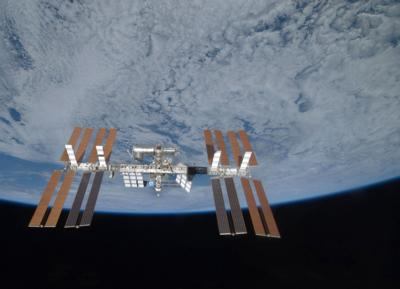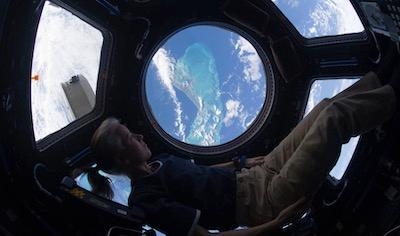Mon, Jul 01, 2024
Doesn't Seem Right -- Watery Grave Planned for 30-Year Old Station
SpaceX has won the NASA contract to build the vehicle that will bring the International Space Station (ISS) out of orbit and to its resting place on the seafloor in a remote ocean location.

The deorbit vehicle contract is worth about $843 million for Elon Musk’s SpaceX. NASA will operate the mission using SpaceX’s technology, it said. The current contract does not include the cost of launching the vehicle, and the separate contract for that will potentially go to SpaceX as well.
The first structural sections of the ISS were launched into a 250-mile orbit above the Earth in 1998. Some areas like core power sections and crew cabins were designed with a lifespan of only about 30 years, and much of the aging infrastructure is not easily or economically replaceable. And while not everyone agrees with the plan, international operators of the ISS will begin the process of decommissioning the station in about 2030.
The ISS is not a small object circling the Earth. It is 356 feet long or about one yard shy of an American football field including the end zones. The solar panels cover an acre, and the 13,696 cubic feet of habitable volume for crew members include 7 sleeping quarters, 2 bathrooms, and a gym. There is also a bubble-like bay window or cupola with a 3600 view.

In planning for the fate of the ISS after its useful life, NASA and its international partners wanted to be mindful of the problem of the amount of space debris circling in low Earth orbit and desired to remove as much of the station as possible. The deorbit vehicle will contain or attach to station components and using SpaceX’s successful technology will be programmed to ensure avoiding populated land areas while falling into a remote area of Earth’s oceans.
NASA Associate Administrator for Space Operations Mission Directorate, Ken Bowersox said, "Selecting a US Deorbit Vehicle for the International Space Station will help NASA and its international partners ensure a safe and responsible transition in low Earth orbit at the end of station operations. This decision also supports NASA’s plans for future commercial destinations and allows for the continued use of space near Earth."
More News
He Attempted To Restart The Engine Three Times. On The Third Restart Attempt, He Noticed That Flames Were Coming Out From The Right Wing Near The Fuel Cap Analysis: The pilot repor>[...]
Make Sure You NEVER Miss A New Story From Aero-News Network Do you ever feel like you never see posts from a certain person or page on Facebook or Instagram? Here’s how you c>[...]
From 2009 (YouTube Edition): Leading Air Show Performers Give Their Best Advice for Newcomers On December 6th through December 9th, the Paris Las Vegas Hotel hosted over 1,500 air >[...]
Aero Linx: NASA ASRS ASRS captures confidential reports, analyzes the resulting aviation safety data, and disseminates vital information to the aviation community. The ASRS is an i>[...]
“For our inaugural Pylon Racing Seminar in Roswell, we were thrilled to certify 60 pilots across our six closed-course pylon race classes. Not only did this year’s PRS >[...]
 NTSB Final Report: Rutan Long-EZ
NTSB Final Report: Rutan Long-EZ ANN FAQ: Turn On Post Notifications
ANN FAQ: Turn On Post Notifications Classic Aero-TV: ICAS Perspectives - Advice for New Air Show Performers
Classic Aero-TV: ICAS Perspectives - Advice for New Air Show Performers ANN's Daily Aero-Linx (06.28.25)
ANN's Daily Aero-Linx (06.28.25) Aero-News: Quote of the Day (06.28.25)
Aero-News: Quote of the Day (06.28.25)




